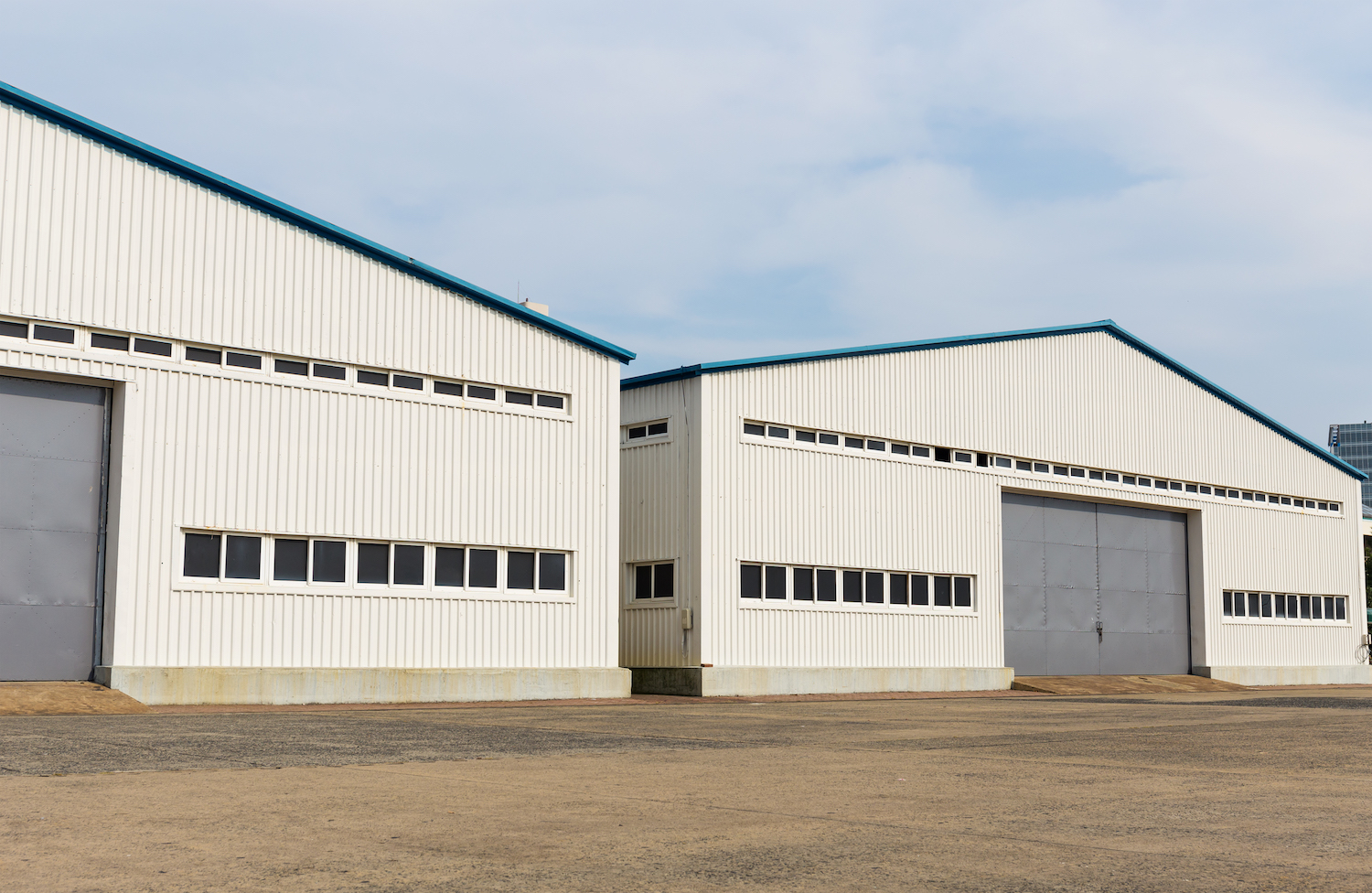E-commerce warehousing dos and don’ts
There are many reasons why you should pick an e-commerce warehousing management system for your growing business, as well as a few roadblocks. We go through the main pros and cons of managing a growing business.

Ioana Neamt

The e-commerce sector has seen growth occur in leaps and bounds in the wake of the pandemic, leading to several new opportunities for businesses to secure profit from the paradigm shift.
Things like running online stores for several businesses, dropshipping, and third-party logistics facilities are all types of ventures that have been on the upswing in recent years. Significant growth in e-commerce has recently facilitated the appearance and strengthening of these types of businesses.
However, a stronger worldwide logistics network and improved inventory management systems can provide further value to those in the manufacturing sector.
Despite the normalization of shipping calls in 2023 following several years of a significantly disrupted supply chain, there’s still room to grow for the logistics sector. Businesses are rallying behind strategies like reshoring and fulfillment in order to secure their workflows and increase uptime. Another priority is cutting down the time between receiving a work order and delivering products to customers.
This is where e-commerce plays a bigger part than ever, and warehousing systems need to rise to the challenge. The promise of e-commerce is quick and seamless order fulfillment, but for businesses to meet this expectation, inventory needs to be stored, organized, picked, and shipped swiftly.
Adopting e-commerce warehousing is crucial for dynamic businesses, so let’s review what it consists of, the steps to selecting the best solution for your business, and its main benefits. Of course, there are also a few things you need to avoid, which we will approach in more detail.
What is e-commerce warehousing?
E-commerce warehousing is the practice of storing inventory that businesses use to fulfill their incoming online orders. The main goal of its process is to ensure timely deliveries and good inventory management.
Businesses use e-commerce warehousing to properly store and keep track of inventory, with the practice now increasingly commonplace across industries. Ultimately, most goods can now be ordered online and paid through an online payment processor. The warehouse then confirms its availability and ships it directly through the customer. Large-scale retailers eventually build their own logistics network and develop proprietary processes as they become fully fledged e-commerce businesses.
However, most businesses may benefit from the use of one of the multiple available inventory management and shipping options. We’ll go through several options as follows.
Types of warehousing
There are several different types of e-commerce warehousing that a business owner should know about. They all pose benefits and disadvantages, so it’s good to know all of your options to make an informed decision that can make or break the success of your business in the long run.
Fulfillment warehouses
These facilities help businesses by being located in close proximity to major thoroughfares in order to facilitate quick delivery to customers. An e-commerce fulfillment warehouse relies on having large amounts of goods in stock, which are then quickly shipped to customers, and relies on storing goods that are in high demand.
Public warehousing facilities
A public warehouse operator rents out its available space to smaller companies, which then use it for storage and distribution. Best suited for up-and-coming businesses that are attempting to transition out of living rooms and garage spaces, public warehousing is a good option due to its cost-effective pricing model. Businesses only pay for space used, usually based on occupied square feet.
Consolidation facilities
Where public warehousing aids businesses by letting them use and pay just for used space, consolidation centers use shipping as their main selling point. These facilities group different orders based on their destination, hence the consolidation part, to provide more efficient shipping rates to vendors.
Advanced warehouses
Also known as smart warehouses, these facilities leverage technological progress to streamline storing and shipping more efficiently. They employ AI-driven storing policies, robotic handling, and IoT-enabled machines that aim to reduce timelines and improve efficiency by eliminating human error.
Multi-owner warehouses
Often referred to as cooperative warehouses, these facilities are co-managed by several owners, often engaged in similar practices. Think of farming ventures that also need to ship their products. These facilities are meant to keep storing and shipping costs manageable, so multiple businesses share the load of owning and managing them.
Bonds
International companies used bonded warehouses in order to facilitate the storing and distribution of goods in other countries. These facilities are operated in accordance with local customs agency policies and provide the benefit of no duties or customs for shipped inventory.

How to pick the best option for your business
Based on the list above, your choice of the right e-commerce warehouse management system clearly depends on a number of factors. Business size, current and short-term growth capacity, as well as long-term potential for scalability, need to be kept in mind when making these decisions.
There are a number of options out there, all better than crowding your personal living space with inventory that needs to be shipped as soon as possible. Meeting this need is the business model responsible for the success of several businesses like Alibaba, Shipstation, and Shopify. These are all third-party logistics companies that drive growth in the e-commerce sector by providing access to a larger marketplace for smaller ventures.
Think about your location, availability of capital, and your business model to choose the right option. If you favor cost control, distribution, or quick delivery, there is an e-commerce warehouse management system out there that’s suitable for your venture.
Factors to consider when picking a solution
- Availability of capital
- Outsourced inventory management
- Distribution model
- Order accuracy
- Ease of use
- Available integrations
- Flexibility
Just remember that as you grow your business, its needs will inevitably change. Ideally, your chosen warehouse management system will stay scalable, but disruptions can appear, as we’ve all learned. Don’t be afraid to try out new options and change things up to facilitate manageable growth.
Don’t be afraid of change
Because your business is a changing organism, frequent audits are necessary to figure out what the best options are to help you meet your goals. Being aware and continuously interrogating your goals and direction is key.
Many things depend on where you see or hope to see your business in the future. Answering this question should take time and close review. It doesn’t mean that once you choose a certain size or structure for your warehouse, you cannot go back. But you want to keep such changes to a minimum by finding the right balance between your current situation and your ambitions for the future.

Consider the specific needs of your business
You need to take into account all the particularities of your business ecosystem and processes. For example, consider if you need to store goods and products at a set temperature or light exposure. Or you might need certain equipment to handle these products or very specific labeling and picking systems. No one will know your business needs better than you and your staff, but you need to make sure you give enough time for analysis and consideration.
E-commerce marked a revolution in the way consumers select, buy, and receive products, and it significantly simplified this whole process. However, it also created the expectation that products will always be in stock and shipped quickly with great accuracy. So, businesses need to make sure they adapt, and warehouses are a key element in the chain. Katana can help streamline your warehouse operations and help you manage your e-commerce business, all in one place. Get in touch with us to learn more.
How does an e-commerce management system (WMS) work?
E-commerce warehouse management is a complex process that involves many moving parts, from instructing your employees to actually managing and securing your inventory. Making sure everything is recorded and monitored is essential, too, as managing an e-commerce warehouse is no easy task.
When your business is only starting up, you might be covered without set procedures, but as the whole business grows, so does your need for real-time control and fast shipping.
Not only will your inventory be better organized and tracked, but you and your staff will endure less stress because you know where your inventory is. This also means you are saving time on handling and shipping.
Setting up an e-commerce warehouse management system takes some essential steps.
- Consider how much space you need
- Assess whether you need any special equipment
- Set up clear procedures
- Monitor for any processes that can be automated
The main pillars of e-commerce warehousing are inventory management coupled with monitoring fluctuations and handling returns. All these steps and processes can be made a lot easier by using top warehouse management software. The most successful businesses are quick to adopt software solutions that enable them to be more competitive every day.
An efficient warehouse management software allows businesses to seamlessly organize inventory and returns, assess spatial requirements correctly, as well as increase productivity and customer satisfaction. So, let’s dive deeper into all the main benefits of e-commerce warehousing.
What are the main benefits of e-commerce warehousing?
- Better control of your inventory
When you take full advantage of well-managed warehouses dedicated to e-commerce businesses, you are in full control of your inventory and shipments. You will no longer risk running out of products or overstocking with a well-oiled warehouse management system. Whether you use an in-house solution or a third-party logistics (3PL) system, your inventory will be better organized and tracked.
- Quick and accurate shipping
For e-commerce businesses, time is of the essence. Customers expect their orders to be shipped quickly, and delivery time is often part of the decision process. If your business falls behind the competition, customers will likely choose to order from those that are fast with their orders. Not to mention the hassle of inaccurate orders being delivered, as these can severely hurt your reputation and decrease the number of returning customers. An advanced e-commerce fulfillment warehouse will enable you to stay agile and efficient with deploying your products.
- Saving time and money
When your inventory is well managed and orders are optimized continuously, you can expect significant improvements in productivity, resulting in saving time and resources. Selecting the right warehouse for your needs enables your staff to be more efficient, thereby boosting your revenue and reducing losses from missed or incorrect orders. Furthermore, with recent technological and AI advances, you can expect more automation and robotics at work in modern warehouses.
- Expansion opportunities
E-commerce warehousing solutions will prime your business for expansion, and you won’t have to worry about accommodating increased inventory and orders. Of course, it might be cheaper to run your business from home, but this strategy limits your growth opportunities. Business owners need to be open to taking on some risks when starting out, and moving out to a proper warehouse and management system will pay off in the long term. You will be able to meet customer demand quickly and seize any opportunities without roadblocks.

What is the downside of not using e-commerce warehousing?
We’ve already listed some of the key benefits of e-commerce warehousing here. However, if you still think the cost might be a bit too high or you are not fully convinced what is the right choice for your particular situation, let’s see what are you likely missing out on if you fail to adopt an appropriate warehousing solution.
- If you choose to continue running your business from your garage or spare room, you might be missing out on many opportunities for growth. Even more, you run the risk of having inventory get lost or run out, which will ultimately hurt your bottom line. Keeping your customers happy with quickly shipped orders is key to your success, but achieving this goal is a lot more difficult when you are not fully in control of your inventory. Shipping orders too late or sending the wrong product will make a big dent in your reputation.
- For your business to grow, you need to take your inventory management a step further and find the best solution for your business needs. Even if you don’t need a huge space or multiple locations, warehousing will give your business a boost and help you maximize growth opportunities. So, while you might think you’re saving money by not adopting e-commerce warehousing solutions, you’re actually missing your chance to expand and grow your business.
Things to avoid with e-commerce warehousing
Now that we have established that not using e-commerce warehousing is detrimental to your success, let’s review the things you should avoid when adopting such a solution.
- Firstly, take your time to analyze business needs and compare the solutions available. Carefully examine what you need in your current stage, but also take into account expansion plans. You don’t want to end up with a system that will be obsolete quickly, as any changes down the line will likely cause disruptions to your processes.
- Another thing you need to keep in mind is that traditional warehousing best practices often don’t apply to e-commerce. Just think of the challenges posed by multichannel sales and the need for real-time inventory tracking. Traditional warehouses might not be well-positioned to answer the needs of a dynamic e-commerce business. To that end, make sure you select your warehouse solution with your business and customer needs in mind.
- Not taking advantage fully of integrations is also something to avoid with e-commerce warehousing. Being open to testing the different integrations supported by your software can give you a competitive edge in the business. You might be able to save time and money by better synching the various processes that keep your business running, and your warehouse management is one place where many of these different processes come together. A powerful warehouse management software will be flexible and adapt to your needs, whether you are managing one warehouse or multiple ones.
- Lastly, you also need to make sure you learn from your mistakes or mishaps. Not being open to these learning opportunities can drag you down. For example, maybe you chose a warehouse space that turned out to be too small for your growing business. That will be painful to fix, but you should see it as a chance to reassess your needs. If your predictions and growth analyses fell short of what really happened, then it means you might need to improve your business intelligence capabilities.

Streamline your e-commerce warehousing operations with Katana
Integrating a robust and reliable ecommerce inventory management software solution like Katana can help you streamline your e-commerce warehousing operations and improve efficiency. From optimizing your warehouse layout and leveraging automation to using data-driven strategies to predict shifting trends in demand, Katana will help you do it all with ease.
Want to see Katana in action? Request a demo today.

Ioana Neamt
Table of contents
Get inventory trends, news, and tips every month
Get visibility over your sales and stock
Wave goodbye to uncertainty with Katana Cloud Inventory — AI-powered for total inventory control